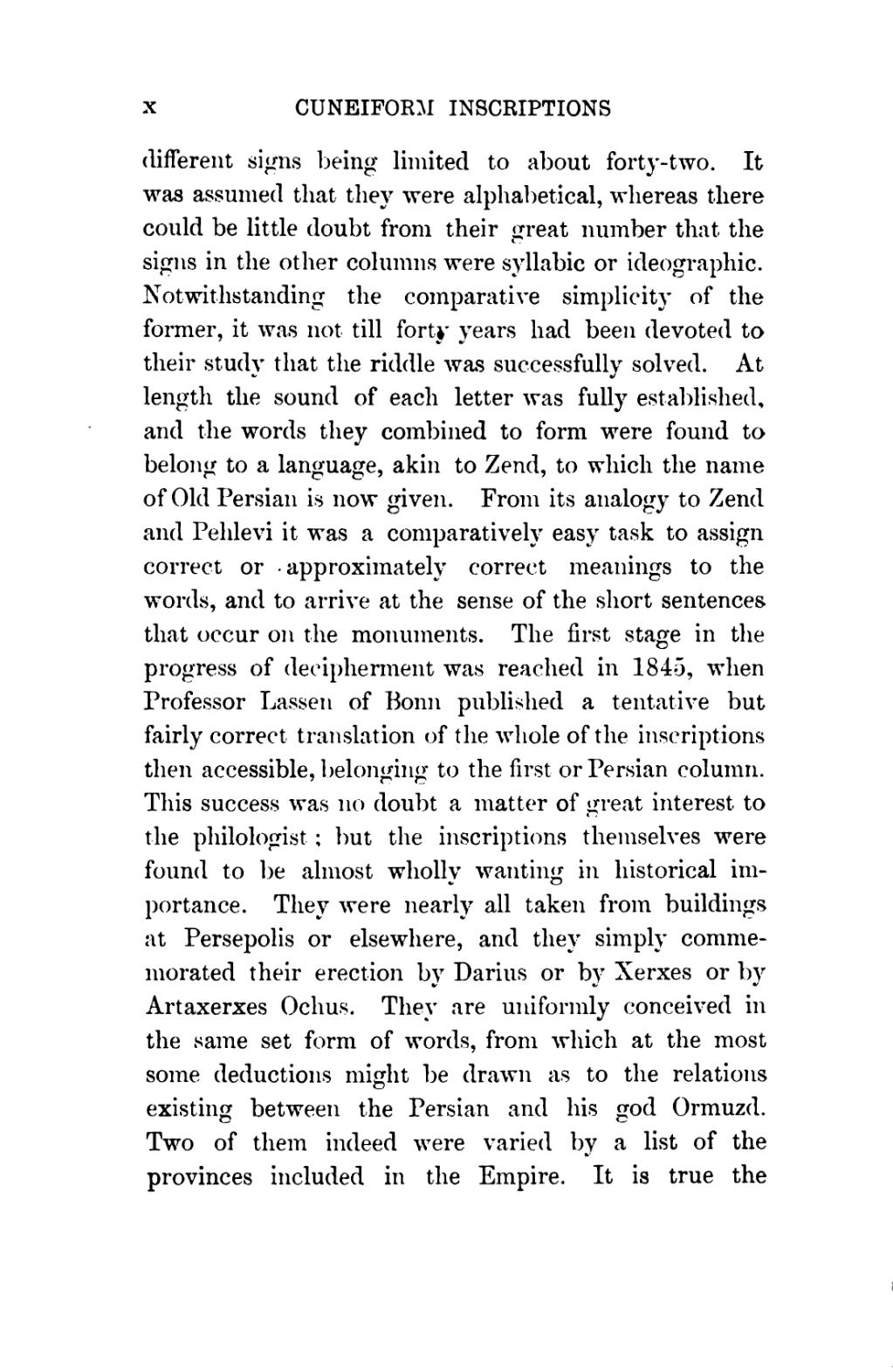different signs being limited to about forty-two. It was assumed that they were alphabetical, whereas there could be little doubt from their great number that the signs in the other columns were syllabic or ideographic. Notwithstanding the comparative simplicity of the former, it was not till forty years had been devoted to their study that the riddle was successfully solved. At length the sound of each letter was fully established, and the words they combined to form were found to belong to a language, akin to Zend, to which the name of Old Persian is now given. From its analogy to Zend and Pehlevi it was a comparatively easy task to assign correct or approximately correct meanings to the words, and to arrive at the sense of the short sentences that occur on the monuments. The first stage in the progress of decipherment was reached in 1845, when Professor Lassen of Bonn published a tentative but fairly correct translation of the whole of the inscriptions then accessible, belonging to the first or Persian column. This success was no doubt a matter of great interest to the philologist; but the inscriptions themselves were found to be almost wholly wanting in historical importance. They were nearly all taken from buildings at Persepolis or elsewhere, and they simply commemorated their erection by Darius or by Xerxes or by Artaxerxes Ochus. They are uniformly conceived in the same set form of words, from which at the most some deductions might be drawn as to the relations existing between the Persian and his god Ormuzd. Two of them indeed were varied by a list of the provinces included in the Empire. It is true the
